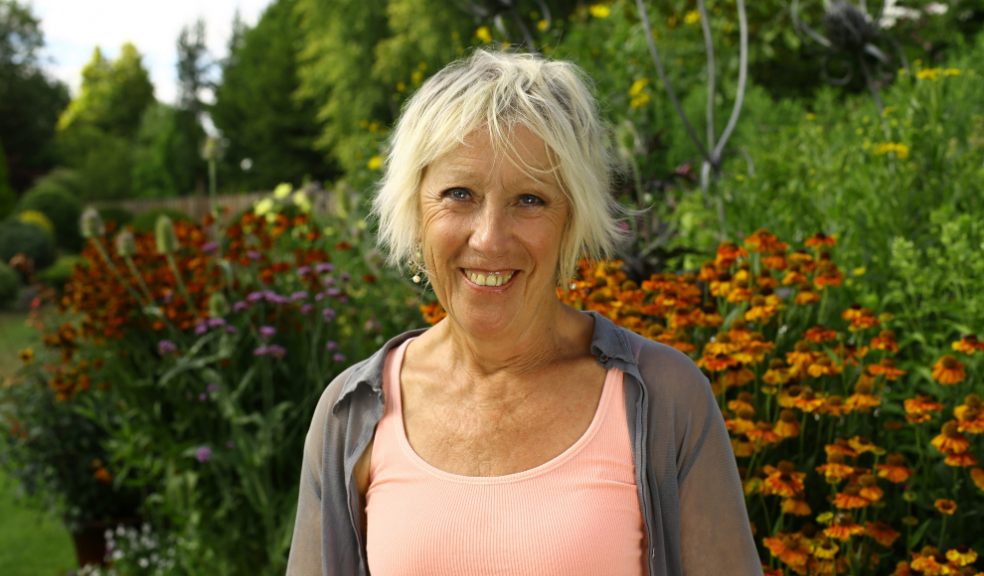
TV presenter Carol Klein spills the secrets of top British gardens – so you can copy their success
As her new Channel 5 series Great British Gardens begins, TV garden expert Carol Klein offers tips from the head gardeners who tend them.
TV plantswoman Carol Klein has spoken to head gardeners and owners of four of Britain’s most glorious gardens to find out how they achieve such amazing results – and is now sharing the secrets of their success with the public in her new Channel 5 series Great British Gardens.
Here, she offers top tips from her visits to the gardens – which all open their doors to the public at different times of the year – to help amateur horticulturists achieve stunning results in their own plots this summer.
Great Dixter, East Sussex (greatdixter.co.uk)
Great Dixter is a gardening masterpiece and quintessential English country garden incorporating an historic house, a garden and an education centre.
It is now under the stewardship of Fergus Garrett, who became head gardener in 1992, working closely with Christopher Lloyd until he died in 2006, and the Great Dixter Charitable Trust.
Garrett’s biggest emphasis currently is upon increasing plant and animal biodiversity.
Two top tips Klein gleaned here are:
1. If some of your plants are in pots, rather than space them out, make maximum impact by grouping them together in an attractive arrangement. Incorporate houseplants out for their summer holiday to add extra interest. Go for harmony by putting together plants with similarly coloured flowers or make dramatic contrasts with leaf shapes and zingy colours.
2. Try adding height by incorporating climbing plants into your beds and borders (it’s not too late to sow nasturtiums and sweet peas). Exploiting the vertical space will add an extra dimension. You don’t need a costly obelisk, a few tall bamboo canes entwined with string will be just as effective.
Gravetye Manor, East Sussex (gravetyemanor.co.uk/the-gardens/)
Once the home and living laboratory of one of British gardening’s greatest innovators, Edwardian and Irishman William Robinson, the manor has now become a stunning country house hotel and beautiful garden.
Head gardener Tom Coward and his team have balanced the garden’s historically important heritage with the demands of a modern productive kitchen garden.
Two top tips Klein gleaned here are:
1. Recognise the beauty of so many vegetables by incorporating a few with your flowers. If you haven’t got any, invest in a packet of Rainbow Chard, sow one seed per module and in a few weeks, you’ll have plants big enough to put out and later on you can eat some of them too.
2. Even in a small border, use several of one plant at intervals throughout the border. At Gravetye Manor dahlia Magenta Star is used like this. It brings cohesion to your planting and at the same time leads your eye through it.
Gresgarth Hall, near Morecambe, North Lancashire (arabellalennoxboyd.com/gresgarth/)
This is the country house retreat of Lady Arabella Lennox-Boyd and her husband Sir Mark. Lady Arabella is one of Britain’s most renowned garden designers, with a 45-year career designing for the great and the good, and has six gold medals from the RHS Chelsea Flower Show under her belt.
Two top tips Klein gleaned here are:
1. The way you train your climbing rose is just as important as how you prune it. For an abundance of flowers, tie in some of the vertical, upward growing shoots to the horizontal. That will help all the smaller shoots along its length make buds and flowers.
2. Instead of providing a trellis for your clematis to grow up, why not train one through an early flowering shrub so that the clematis can continue the show through till the autumn? Many clematis viticella varieties will rise to the challenge, such as Clematis ‘Polish Spirit’ in deep purple or Clematis ‘Huldine’, pearly white.
John’s Garden, Ashwood Nurseries, South Staffordshire (ashwoodnurseries.com/visit-us/johns-garden/)
Set against the beautiful backdrop of the Staffordshire and Worcestershire Canal, this three acre private garden is the brainchild of award-winning plant obsessive John Massey.
It features huge informal borders, island beds, a stunning pool and rock garden, woodland dells and the charming Ruin Garden.
Two top tips Klein gleaned here are:
1. A bit of ‘transparency’ pruning makes all the difference. If shrubs or trees have turned into blobs and their branches are congested, cut some of the wood away to reveal the true nature of the shrub. Shrubs which flower early such as forsythia benefit from having branches cut back after flowering to encourage new growth and improve flowering next spring.
2. ‘Tweaking’ is an important job at John’s Garden. They keep a constant eye out to make sure that each plant can give of its best by cutting back or staking other plants that might spoil the show and ensuring that every plant can shine.
The four-part series of Great British Gardens: Season by Season with Carol Klein starts on June 4 at 9pm on Channel 5.













